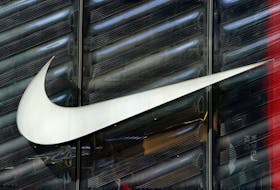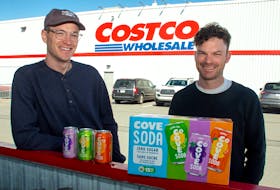A major expansion of Surrette Battery’s production facility in Springhill was recently announced, aided by a $2.45 million loan from the Atlantic Canada Opportunities Agency (ACOA). The 25,000-square-foot expansion will incorporate advanced robotics and automation, while adding an additional 18 jobs to the current workforce of 82 people.
What is intriguing about this company is its visionary focus on making large scale batteries for storing the electrical energy now being produced from solar and other renewable energy sources.
To put this development in perspective, recognise that the Sun is the major source of energy in our part of the universe, pumping out photons for the past four billion years from its nuclear furnace. Secondly, our planet began storing this energy from the Sun, just some 500 million years ago, when plant life began colonising our early continents.
Through “photosynthesis”, light energy from the Sun was converted into chemical energy stored in plants to fuel their growth. As massive quantities of trees and other greenery died and decayed over time, stores of this energy were accumulated below ground that we now refer to as “fossil fuels” . . . primarily in the form of coal, oil and natural gas.
Until the arrival of the industrial revolution, these sources of energy remained largely untapped. And any negative effects on our environment from the burning of coal and wood to heat homes was not a great source of concern. However, while not in Mother Nature’s plan, the subsequent massive use of fossil fuels to power our planet has turned out to be extremely harmful to our total environment.
Thanks to solar panel technology we can now capture as much of the Sun’s energy in electrical form as we need …but there remains the challenge of storing it for use when the sun doesn’t shine. And this is where Surrette Battery’s highly competitive product line fits in.
Established in Springhill in the 1950s by John Surrette, its initial focus was on making batteries for marine, industrial and automotive applications. However, with the growing popularity of renewable energy applications that market now drives the majority of Surrette’s production in Springhill, and its worldwide exports.
CEO James Surrette is proud to list the needs served by Surrette products around the world, ranging from solar powered “mini-grid” systems which power entire island communities off the coast of Scotland, to systems providing stable power for schools in Sub-Saharan Africa,
market for renewable energy storage batteries around the world is exploding. California, the world's fifth-largest economy behind the United States, China, Japan and Germany, and long a trendsetter with its clean-energy goals, took a further giant step last year, becoming the first U.S. state to require all new homes to be equipped with solar power, beginning in 2020.
It’s not a stretch to imagine Californian home builders adding to their solar energy options the latest in electrical energy storage technology in the home, allowing consumers to power their homes with stored energy on most days, and use the local power company as a “standby” supplier of last resort.
Through attention to detail, Surrette has developed a reputation for reliable, quality products; and the use of the “Rolls” brand for the battery line echoes that tradition. Interestingly, automaker BWM, who acquired Rolls-Royce Motors in 1998, gave Surrette permission to use the Rolls brand name since they were in a different line of business.
To maintain leading-edge expertise in the area of battery technology, Surrette has developed a strong working relationship with Dalhousie University's Renewable Energy Storage Lab (RESL), which has assisted with performance validation, testing standards and product advancement. More recently, the University of PEI’s engineering department have also contributed market and performance studies useful to the firm.
Attracting and retaining qualified talent is another cornerstone of Surrette’s expansion plans. However, while the province, and Halifax in particular, is experiencing some population growth, the qualified labour pool in our county is approaching full employment levels, in spite of our overall unemployment rate being above average.
So, to meet anticipated future growth needs Surrette sees hiring programs such as the federal “Study and Stay” program for immigrant students as a potential source. In the meantime, the local NSCC campuses contribute by turning out excellent “employment ready” graduates, three of whom currently work in the Surrette Springhill office.
Surrette also pays great attention to the suitability of potential hires in the recruitment process. The management team has developed skills in sorting through and retaining talent, which leads to well-chosen recruits working with like-minded individuals. A key factor is a reasonable probationary period, with leaders and supervisors signing off on hiring an individual before a final offer is made.
As for what our communities should be emphasising to attract other firms to this region, James Surrette sees the "affordability index" and "lifestyle gains" of living in Cumberland County as being key attributes. The latter inducement can be the clincher. As I like to say, “I now Iive where other folk take their vacations”.
As for the future of “fossil fuels” as a source of energy, it’s likely that our descendants will look back to our living in the “fossil fuel age”, along with the “stone age” and “iron age”, as periods in our planet’s history to be viewed with a mixture of curiosity and some disbelief.

![['Did You Know That with Alan Walter']](https://saltwire.imgix.net/did-you-know-that-with-alan-walter-3009037.jpg?cs=srgb&fit=crop&h=568&w=847&dpr=1&auto=format%2Ccompress%2Cenhance)







